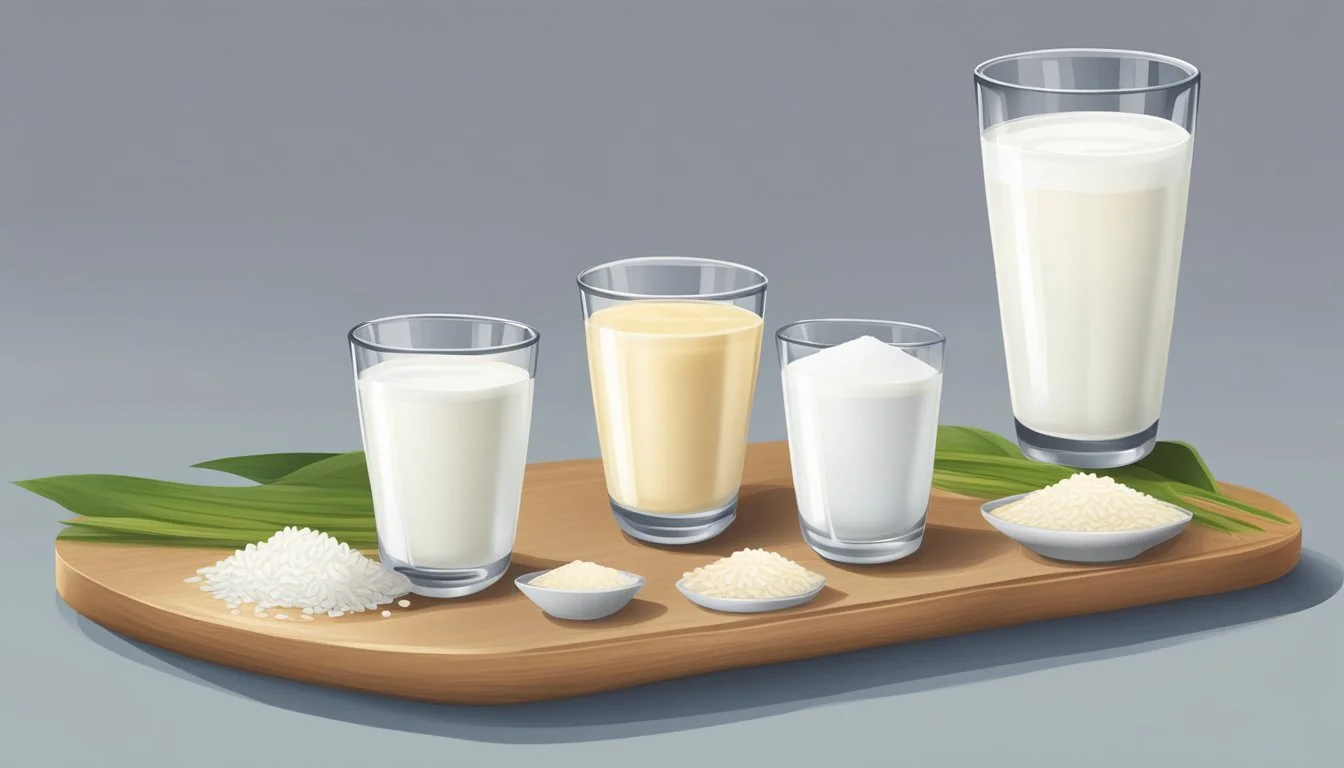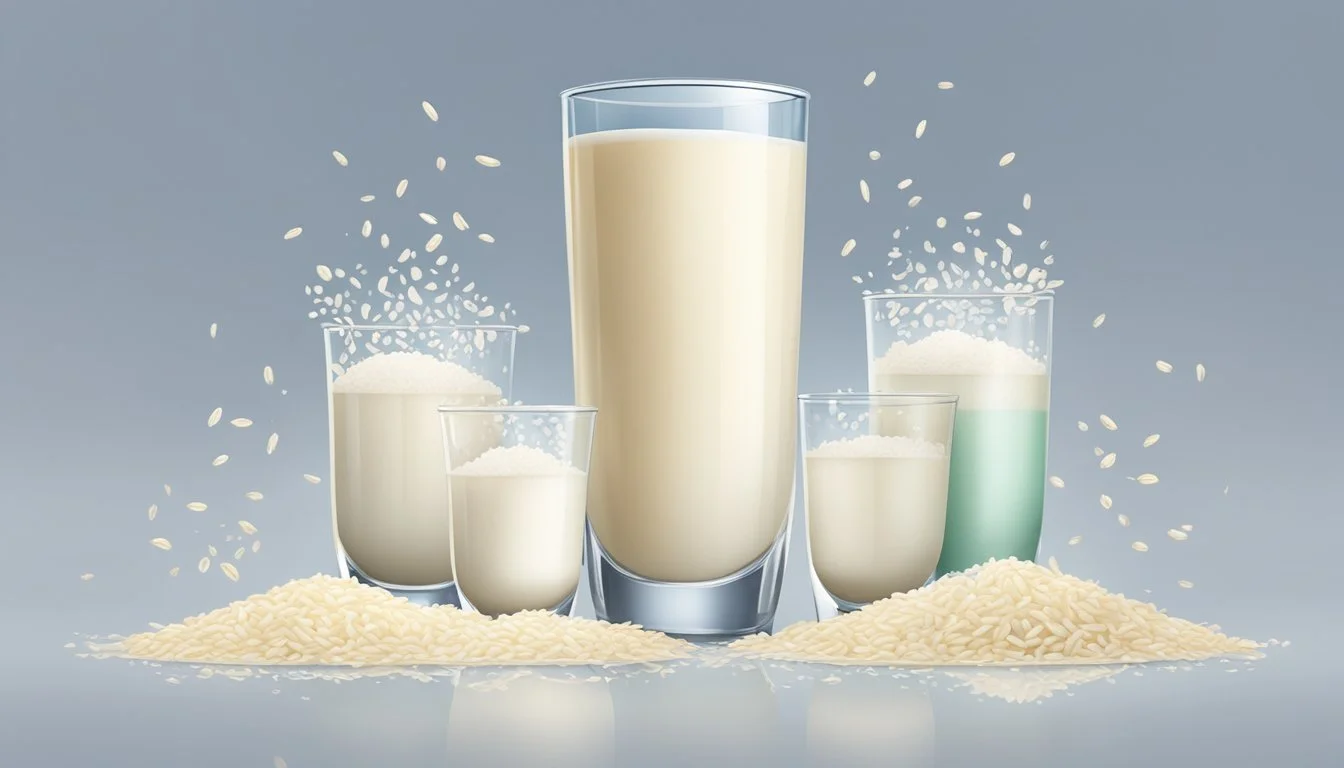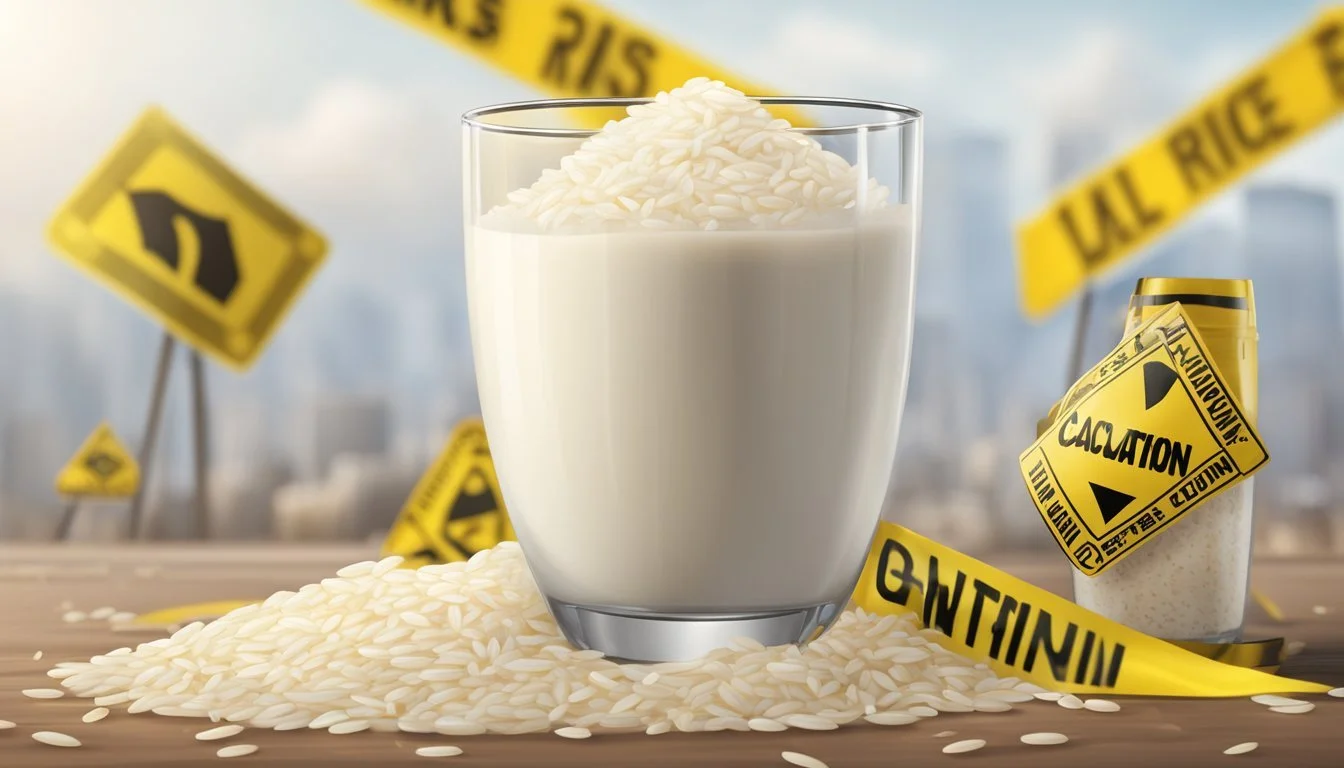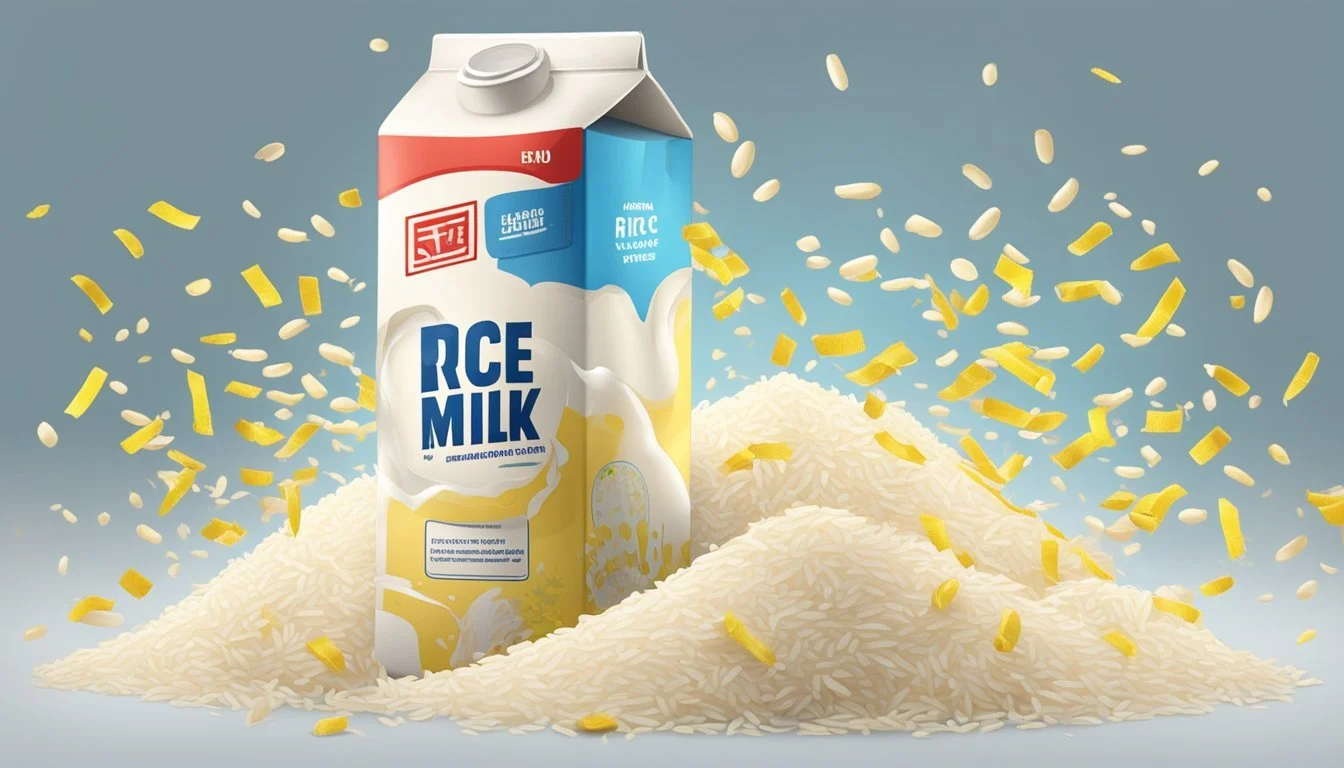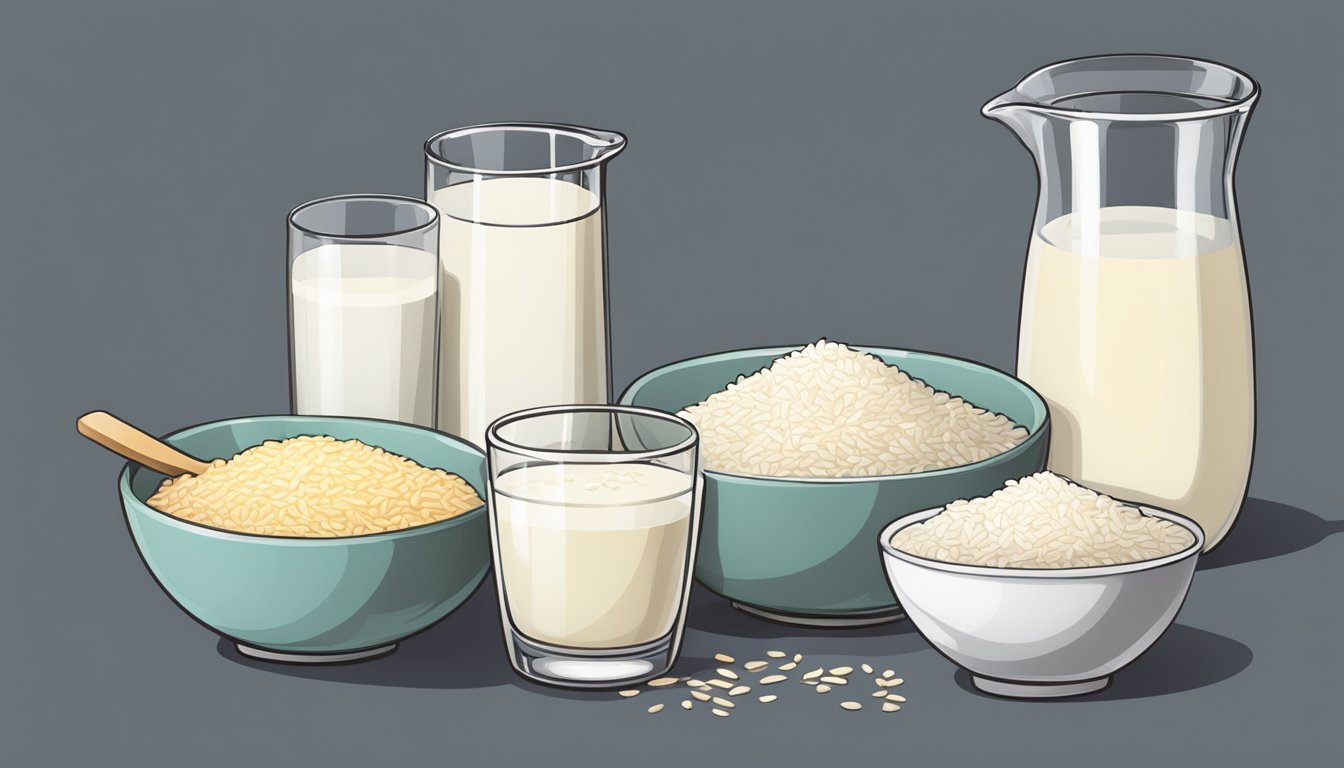How Many Servings of Rice Milk Is Too Much
Health Guidelines and Tips
Rice milk has become a popular alternative to dairy milk. It’s important to consider how much rice milk consumption is too much for maintaining a balanced diet. Consuming more than two servings of rice milk per day can lead to excessive sugar intake and potential nutrient deficiencies.
Each serving of rice milk typically contains around 115-120 calories and about 22 grams of carbohydrates, with minimal protein and fats. While it’s fortified to provide essential nutrients, relying heavily on rice milk without incorporating other sources of vitamins and proteins can affect overall health.
Diabetics and individuals needing to manage their blood sugar levels should be cautious with rice milk due to its higher glycemic index. Overall, moderation is key. Balancing rice milk intake with other nutritious foods ensures a varied and healthy diet.
Understanding Rice Milk
Rice milk, a popular non-dairy alternative, is favored for its mild flavor and hypoallergenic properties. When comparing rice milk to other milk alternatives, its nutritional profile and suitability for different diets stand out.
Nutritional Profile
A single 1-cup (8-ounce) serving of rice milk contains approximately 120 calories. It is generally low in fat, typically 2-3 grams per cup, with no saturated fat, making it heart-friendly. Rice milk is low in protein with around 0.28 grams per serving, significantly lower than dairy milk's 8 grams. Carbohydrates are higher, with around 23 grams per serving, making it a more energy-dense option.
Rice milk is often fortified with essential vitamins and minerals. These fortifications typically include Vitamin D, Vitamin B12, and Calcium, boosting its nutritional value. Despite these benefits, it lacks the natural protein found in dairy, soy, or almond milk, which may be a consideration for those needing higher protein intake.
Comparison to Other Milk Alternatives
Rice milk stands out for being free of common allergens such as soy, nuts, and dairy, making it an excellent choice for individuals with multiple food allergies. Comparing it to soy milk, which contains about 7 grams of protein per serving, rice milk falls short in protein content. Almond milk also offers more protein (approximately 1 gram per serving) but typically has fewer calories and fat.
In terms of calories, oat milk is similar to rice milk, but oat milk often contains more fiber and protein, providing a more balanced nutrient profile. Dairy milk, including low-fat options, contains more balanced nutrients like protein, fats, and essential vitamins, making it more suitable for those not restricted by dietary allergies or intolerances.
When selecting a milk alternative, consumers should consider their dietary needs, whether it's avoiding allergens or seeking specific nutrient supplementation.
Health Considerations of Rice Milk
Rice milk is a popular choice for those looking to avoid dairy, providing potential benefits for specific health conditions and dietary needs. Key considerations include its advantages for lactose intolerance, its impact on blood sugar, and its fortification with essential vitamins and minerals.
Benefits for Lactose Intolerance and Allergies
Rice milk is a lactose-free alternative, making it suitable for individuals with lactose intolerance or dairy allergies. Unlike dairy milk, rice milk does not contain lactose, thus avoiding digestive discomfort such as bloating, gas, or diarrhea.
Moreover, being free from common allergens like dairy and nuts, rice milk is a safe option for people with multiple food sensitivities. This opens up a nutritious milk alternative to a broader population who may not tolerate other options.
Glycemic Index and Diabetes Management
Rice milk has a high glycemic index (GI), which means it can lead to rapid spikes in blood sugar levels. This is an essential consideration for individuals with diabetes or insulin resistance. While it provides a dairy-free alternative, those managing their blood sugar need to be cautious with its intake.
Many commercial rice milk products contain added sugar, further increasing the GI. Opting for unsweetened varieties can help mitigate some of these effects, but overall, portion control is critical for managing blood sugar effectively.
Calcium and Vitamin Enrichment
Despite being low in saturated fat, rice milk typically lacks the nutrients found in cow’s milk. However, many commercial varieties are fortified with calcium, vitamin D, and vitamin B12 to bridge this gap. This fortification supports bone health and helps prevent deficiencies, especially important for those on a dairy-free diet.
Calcium enrichment can help maintain strong bones, reducing the risk of osteoporosis. Vitamin D aids in calcium absorption and immune function, while vitamin B12 is crucial for nerve health and red blood cell production. Fortified rice milk can thus play a valuable role in a balanced diet.
Recommended Servings and Dietary Guidelines
Understanding how many servings of rice milk are appropriate is crucial for maintaining a healthy and balanced diet. Factors such as portion sizes, dietary balance, and age-specific needs all play a role.
Understanding Portion Sizes
The USDA uses specific serving sizes to help individuals understand how much to consume. For example, 1 cup (240 ml) of rice milk is typically considered one serving.
Serving Size refers to a measured amount, like a cup or ounce, while Portion Size is what individuals actually consume, which can be more or less than a serving. Knowing this distinction aids in accurately managing intake.
Aligning with a Balanced Diet
Rice milk, being a plant-based beverage, provides certain nutrients but lacks some essentials found in dairy or fortified alternatives. Including rice milk as part of a balanced diet means complementing it with foods high in protein, vitamins, and minerals.
A variety of food groups should be incorporated:
Fruits and vegetables: Aim for at least 5 servings per day.
Whole grains: Include items like brown rice, oats.
Proteins: Focus on lean meats, beans, and legumes.
Considerations for Different Age Groups
Nutritional needs vary by age. Children and adults have different requirements for calcium and vitamin D, often found in fortified rice milk.
For children aged 2-8, 2 cups of dairy or dairy alternatives, including rice milk, are recommended daily.
Adults generally need around 3 cups per day to meet their dietary guidelines. Moderation and variety are key.
Adults over 50 may need additional calcium and vitamin D, making fortified rice milk a potentially good option.
To best integrate rice milk into a diet, consulting with a nutritionist can help tailor servings to individual health needs.
Risks of Overconsumption
Consuming rice milk in excessive amounts can bring about several health concerns. These range from issues related to weight gain and nutrient imbalance to potential exposure to harmful additives and arsenic.
Weight Gain and Nutrient Imbalance
Rice milk generally contains added sugars, increasing overall calorie intake. This added sugar can contribute to weight gain, particularly when rice milk is consumed in large quantities.
The beverage is low in protein and often lacks essential nutrients found in dairy milk, such as calcium and vitamin D. While some manufacturers fortify rice milk, reliance on it as a primary source of nutrients can lead to dietary imbalances. Nutrient deficiencies may occur, impacting both immunity and overall health.
Exposure to Additives and Arsenic
Manufactured rice milk may contain various additives to enhance taste and texture. These additives can sometimes cause allergic reactions or gastrointestinal discomfort for sensitive individuals.
Rice is known to absorb arsenic from the soil more than other cereals. Overconsumption of rice milk might lead to an increased intake of arsenic, which has been linked to long-term health issues, including higher risks of cancer and cardiovascular diseases. Monitoring intake and choosing brands that test for arsenic levels can help mitigate these risks.
Integrating Rice Milk into Meals
Rice milk can be a versatile addition to meals, providing key nutrients like calcium and vitamin D, especially when fortified. It can be seamlessly integrated into various daily meals, offering a lactose-free alternative for those with dairy sensitivities.
Creating a Nutrient-Dense Meal Plan
Incorporating rice milk into a meal plan involves balancing it with other nutrient-rich foods. For breakfast, it can replace cow's milk in cereal or smoothies.
Oatmeal cooked with rice milk adds flavor without compromising on texture. Consider including whole grains such as quinoa or barley alongside the rice milk to enhance protein and fiber intake. This combination helps maintain energy levels throughout the day.
For lunch and dinner, rice milk can be used in soups, stews, and sauces. Pair it with vegetables like spinach or kale for added iron and folate. Using rice milk in mashed potatoes or casseroles can make these dishes creamier without dairy. It's essential to include diverse protein sources such as beans, lentils, or tofu to complement the meal nutritionally.
Pairing with Other Food Groups
To maximize the nutritional benefits of rice milk, it's crucial to pair it with a variety of food groups. Rice milk can be a base for fruit smoothies, which combine vitamins and fibers from fruits like berries, bananas, and mangoes.
In desserts, rice milk can replace dairy milk in puddings and baked goods, offering a creamy texture while keeping the dish dairy-free. Combining rice milk with nuts and seeds introduces additional magnesium and healthy fats to the diet.
Additionally, rice milk can be used in plant-based protein shakes. Mixing it with protein powders or nut butters can create a balanced, nutrient-dense beverage. Ensuring that other meals include vegetables and grains can help round out the diet and meet daily nutritional requirements.
Special Considerations
Rice milk intake can differ based on specific needs such as pregnancy, childhood nutrition, and athletic performance. It is crucial to understand these needs to manage their dietary impact effectively.
Pregnancy and Childhood Nutrition
For pregnant women and children, rice milk can be part of a balanced diet. Pregnant women require extra nutrients such as folic acid, calcium, and vitamin D. Rice milk is generally low in protein and some nutrients, so supplementation or additional food sources might be necessary.
For growing children, calcium and protein are vital. Rice milk, typically lower in these nutrients compared to cow's milk, may not be sufficient alone. Parents should consult with healthcare providers to incorporate additional nutrient-dense foods or supplements.
Athletes and High-Energy Demands
Athletes with high-energy demands can benefit from rice milk's carbohydrates for quick energy. However, rice milk is lower in protein compared to dairy or soy milk.
To meet protein requirements, athletes could pair rice milk with higher protein foods or supplements. They should also consider overall nutrient intake to ensure a well-rounded diet supporting recovery and performance.
_dirs:
"detail" paragraphs: "short" style: "subheadings"
Conclusion
Moderation is key when it comes to consuming rice milk.
Rice milk can be a part of a healthy diet. It offers a low-fat, low-protein alternative to cow's milk. Yet, due to its lower nutritional value compared to other milks, it is essential to balance it with other nutrient-rich foods.
Rice milk contains lower amounts of calcium and protein. Supplementing with other sources like leafy greens or legumes can help ensure adequate nutrient intake.
The intake of rice milk should be mindful of its carbohydrate content. This is particularly important for those managing blood sugar levels.
Health considerations must include potential allergens. Individuals should check for added sugars and opt for unsweetened versions when possible.
A balanced diet should be maintained. Incorporating a variety of milk alternatives ensures a more diverse nutrient profile.
Dietary choices should factor in personal health needs and preferences. Consultation with a healthcare professional is advised for personalized guidance.
Rice milk can be included in various recipes. It is versatile and can be used in smoothies, cereals, and baking.
Adjust servings based on dietary needs. Typically, limiting to 1-2 cups per day can be a reasonable guideline for many individuals.
Always monitor the body's response to dietary changes. This helps in making informed decisions about serving sizes and frequency.

